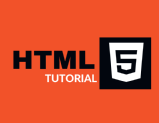HTML allows students to structure webpage content, while CSS affects the layout and styling. After finishing this course, students will have a solid foundation in building basic websites.
Some of the key features of learning HTML (Hypertext Markup Language) include:
-
Essential for Web Development: HTML is the fundamental building block of the web. It is used to create web pages, which are the backbone of the internet. Learning HTML is essential for anyone who wants to create or maintain a website.
-
Simple and Easy to Learn: HTML has a relatively simple syntax and is easy to learn. It does not require any prior programming knowledge or experience, which makes it accessible to beginners.
-
Structured Markup Language: HTML is a structured markup language, which means that it is used to define the structure and content of web pages. It uses tags and attributes to specify elements such as headings, paragraphs, images, and links.
-
Platform Independent: HTML is a platform-independent language, which means that web pages written in HTML can be viewed on any device that has a web browser, such as a desktop computer, laptop, tablet, or smartphone.
-
Compatibility with Other Technologies: HTML works seamlessly with other web technologies, such as Cascading Style Sheets (CSS) and JavaScript. CSS is used to add visual styling to web pages, while JavaScript is used to add interactive features and functionality.
-
Continuous Updates: HTML is an evolving language, with new versions and updates being released regularly. Keeping up with the latest updates and changes in HTML can help you stay current with web development trends and best practices.
-
Career Opportunities: Learning HTML can open up a wide range of career opportunities, from web developer to digital marketer, content manager, or web designer. As businesses continue to move online, the demand for web development skills is only expected to grow in the future.






